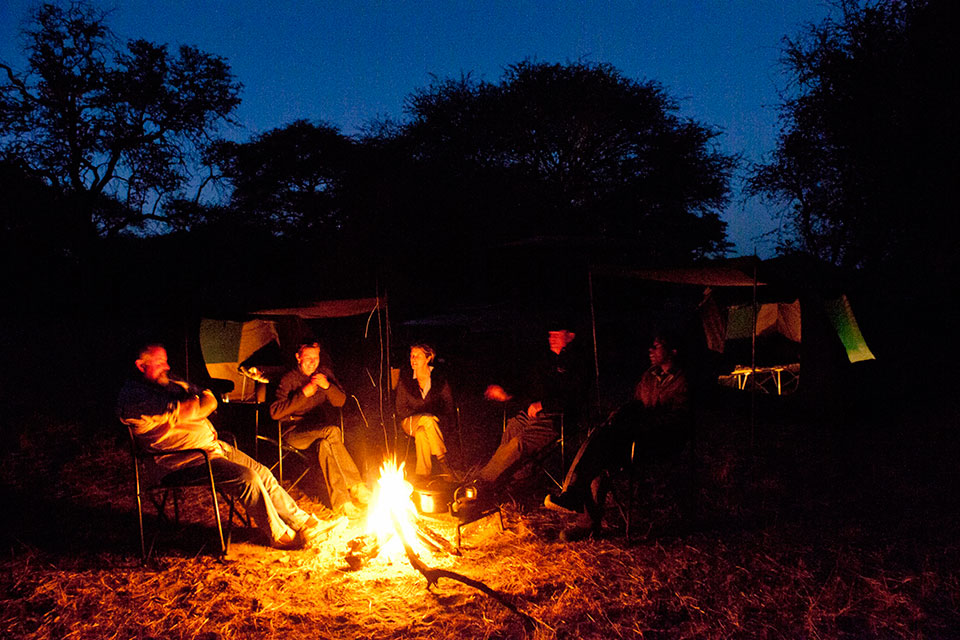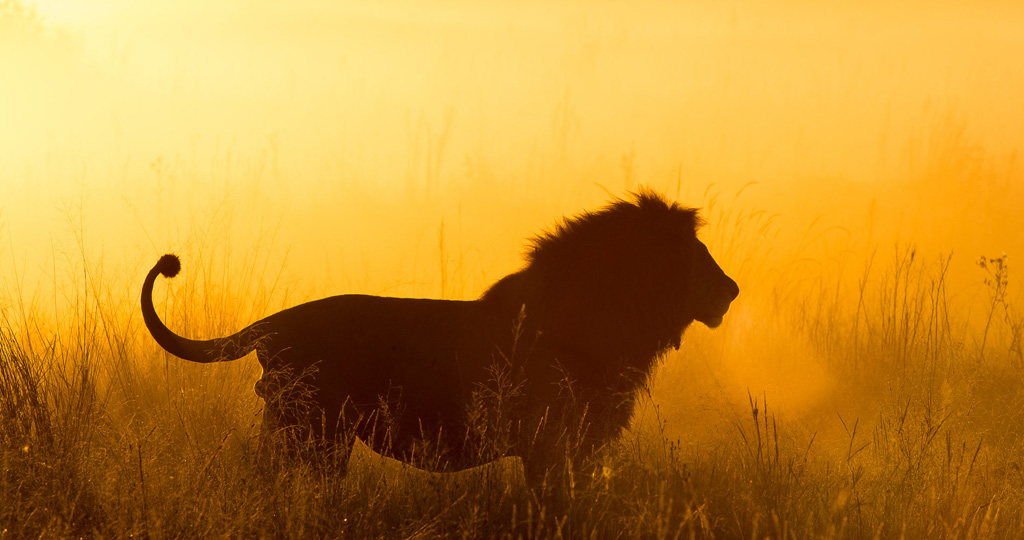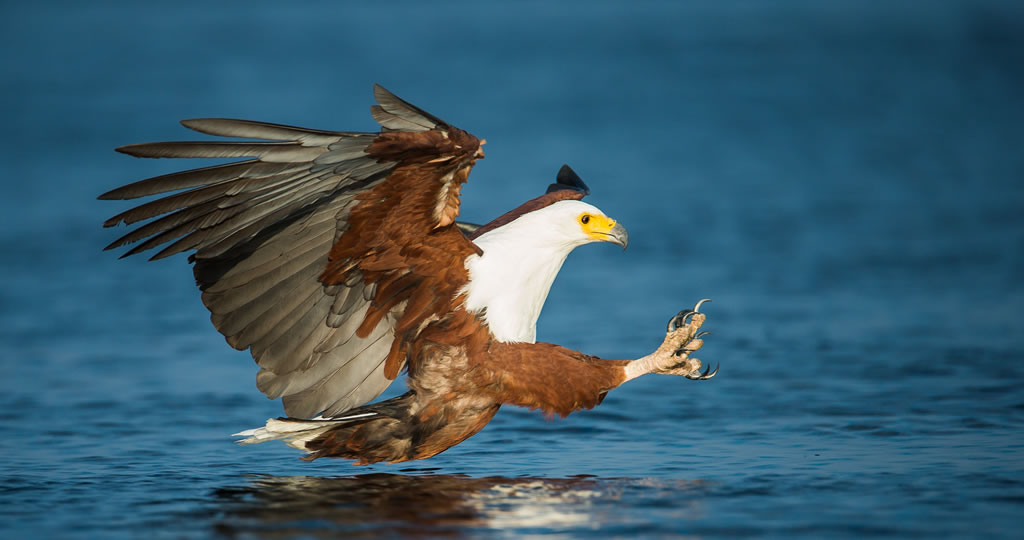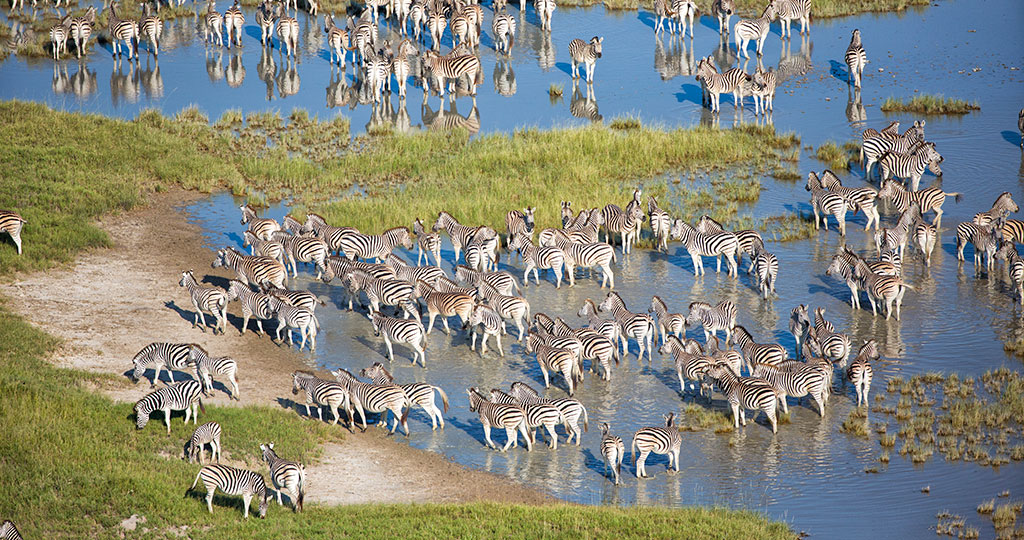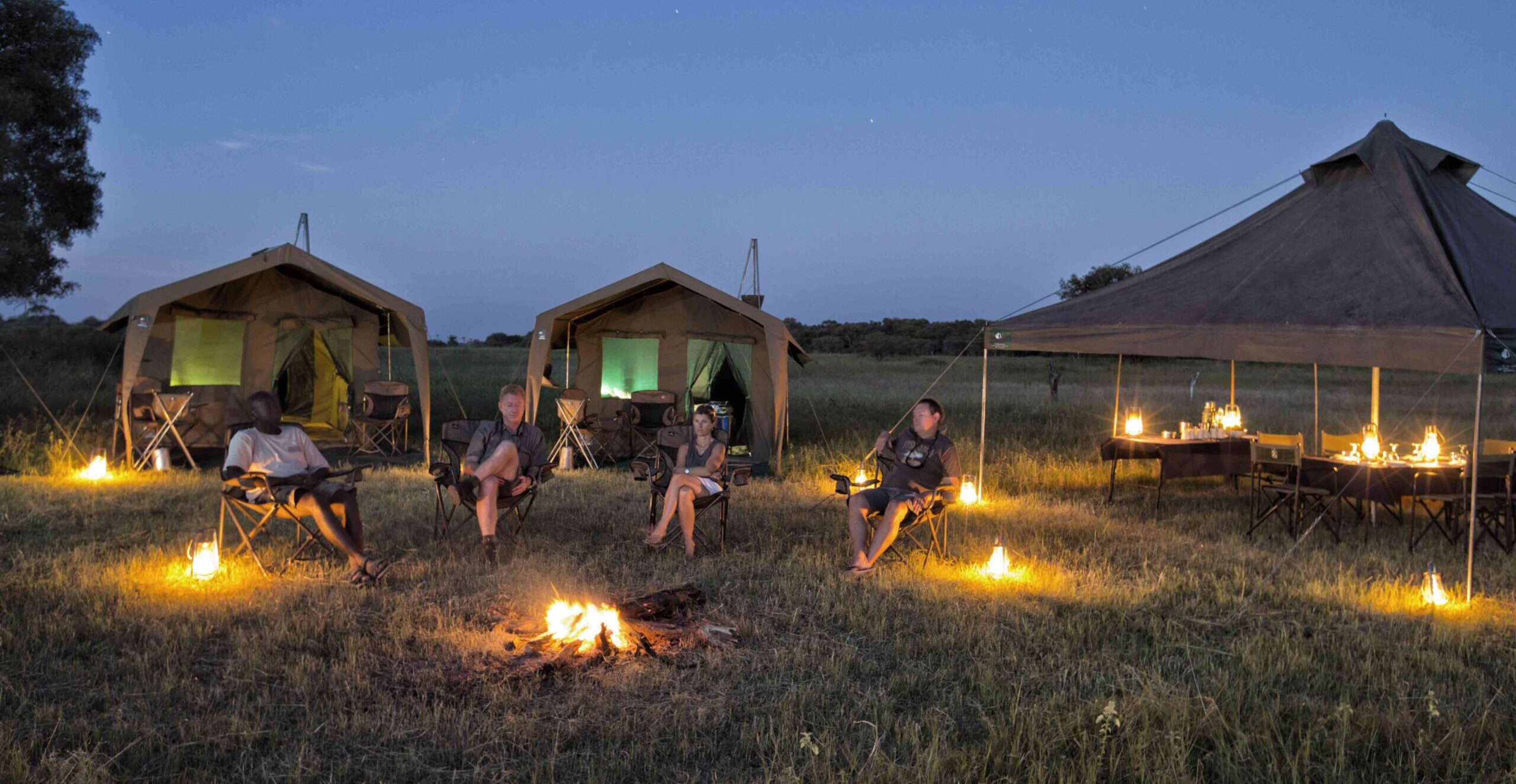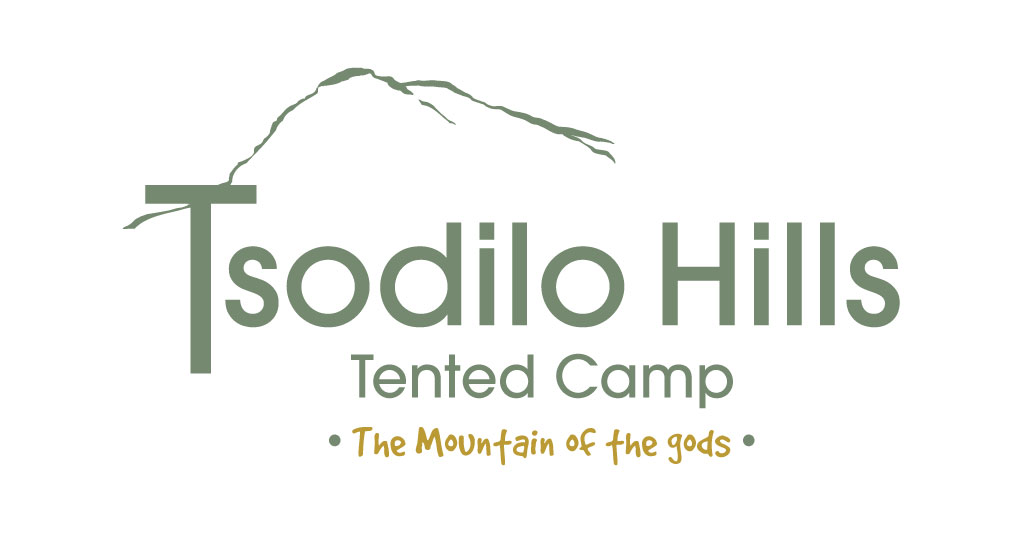©Unchartered Africa
Detailed Itinerary
3 Nights serviced camping in the Central Kalahari Game Reserve
Your guide will meet you at Maun Airport at 9:00 AM to begin your unforgettable Kalahari adventure. From here, you’ll depart in an open game drive vehicle, heading into the vast and remote Central Kalahari Game Reserve (CKGR).
Today’s journey takes you to Deception Valley, where you’ll spend the next three nights immersed in the wild beauty of the Kalahari. The drive takes approximately 5–6 hours, with a picnic lunch enjoyed en route. As you travel, the landscape gradually transforms—dense bush gives way to open pans and low grasslands, eventually revealing the sweeping valleys that define this ancient terrain.
Deception Valley and the surrounding areas, including Passarge Valley, Sundays Pans, and Letiahau, were once ancient riverbeds, now long extinct and carpeted in short, dry grasses. With the first rains, this arid land comes alive, the grass turning green and attracting herds of wildlife in search of nourishment.
To deepen your appreciation for this extraordinary ecosystem, we recommend Cry of the Kalahari by Mark and Delia Owens—an evocative account of life and research in this remarkable region.
Fierce, haunting, and unforgettable, the CKGR leaves a lasting impression. Long after your departure, you may find yourself longing to return to its raw, soulful beauty.
3 Nights serviced camping in the Makgadikgadi National Park in search of the Makgadikgadi Pans zebra migration
We pack and move camp east to the huge expansive grasslands of the Makgadikgadi Pans in search of the huge numbers of zebra (up to 25000 animals) that leave the Boteti river system and concentrate on the open grasslands in search of nutritious grasses to give birth to their young. Despite their numbers they can be elusive and we spend the next three nights in search of the herds and exploring this vast open landscape. A scenic flight by helicopter is included in the safari in search of the Zebra Migration.
Safari ends in Maun
Following our customary early morning breakfast and early game drive we say goodbye to our back up team and camp staff and drive back to Maun. You will arrive in Maun around noon in time for outbound flights or for your onward arrangements.
NOTE: Although we make every effort to adhere to schedules, itineraries and activities, these are subject to change in light of changing local conditions (weather and roads) as well as availability. You will be notified accordingly. Rates are subject to National Park increase by Botswana Government without prior notice.
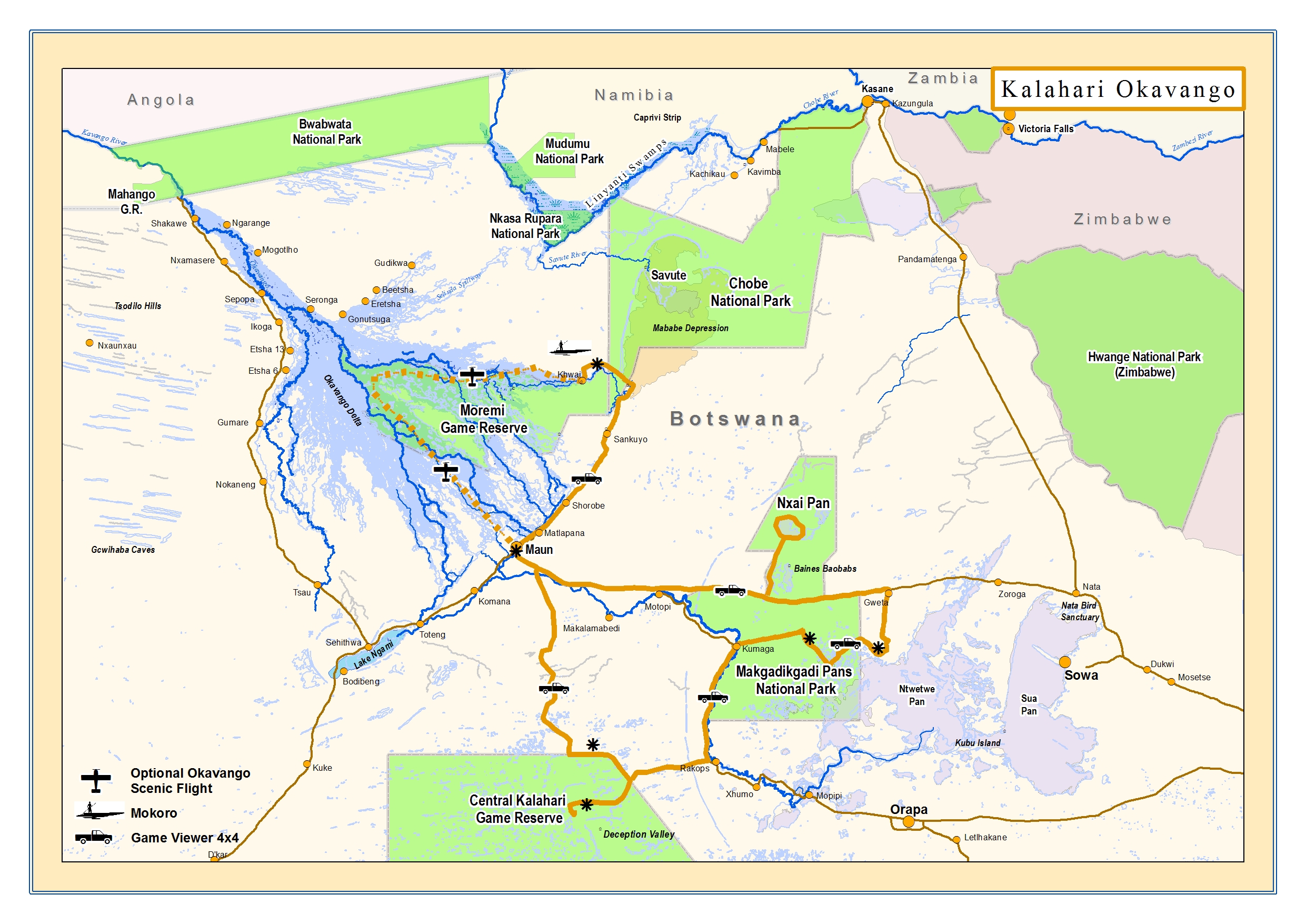
Highlights
Central Kalahari Game Reserve
Most of the scenery en-route to CKGR is cattle country and dry savannah bush. After approx 5 hours the vegetation changes and small dry pans (open areas) appear and at one stage the land falls gradually away to Deception Valley. The valleys in the Kalahari are extinct river valleys that occurred millions of years ago and are now covered in short dry grass. After a little rainfall the grass turns green offering the wildlife much needed nutrition after a harsh dry winter. Most of the antelope species converge in the river valleys in search of this nutrition and also to give birth to their young. This is a purely natural wilderness with little human affect and has stayed in this condition for hundreds of years. The CKGR is known as a desert as 99% of the year there is a lack of surface water. The animals survive by getting moisture from early morning dew and from the plants they eat. The reserve is also the ancient home of the “San” or Kalahari Bushmen.
The CKGR has enormous horizons and many kilometres of seemingly endless grass plains. As the antelope converge in the valleys so the predators follow. CKGR has good populations of the famous “Kalahari lions“ and is a very good place to see Cheetah and Brown Hyena if you are very lucky. To get the best experience in the Kalahari it is advisable to leave the camp as early as 5.30 am as most of the fauna is active early and then retire to the shade in the midday heat to avoid excessive water loss. Early mornings and late afternoons are the best time to photograph this amazing landscape.
To get a better idea of this unique ecosystem we recommend you read “Cry of the Kalahari” by Mark and Delia Owens.


